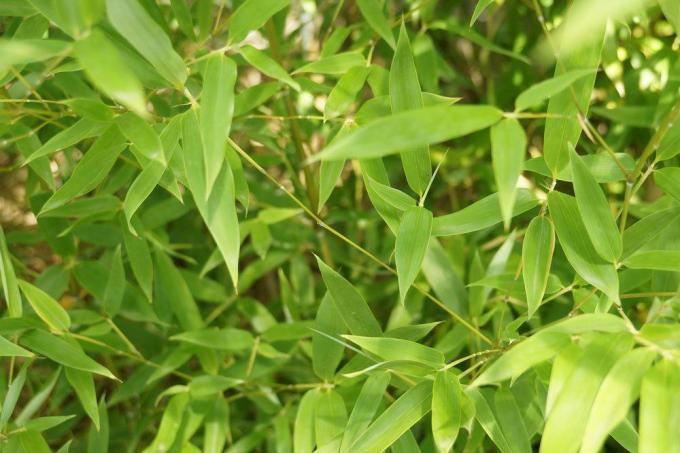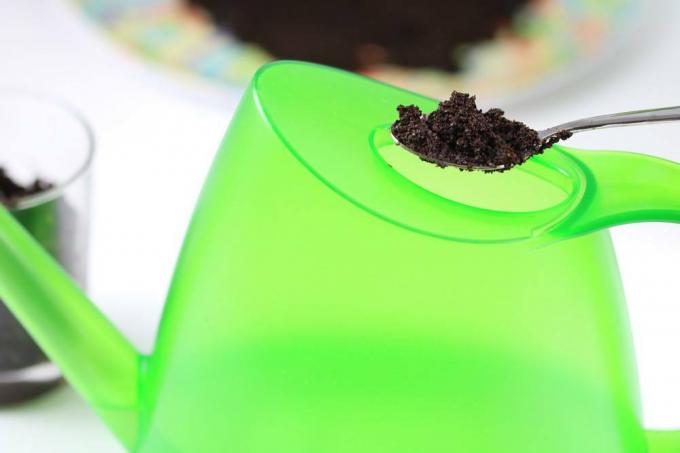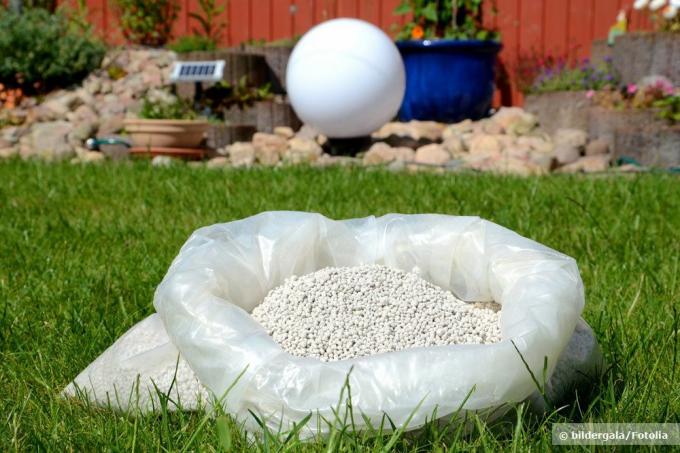
table of contents
- Fertilize bamboo
- time
- Suitable fertilizer
- Fertilizers from the trade
- Home remedies
- Bamboo plants in a pot
A bamboo grows and grows and grows. Even in our latitudes. The Asian sweet grass tirelessly drives out new stalks. And that's exactly what we hope for from him. Of course, more than water and light is needed for fresh leafy green. That is why we should deliver good building blocks to his soil on time. What is meant is a fertilizer that leaves nothing to be desired. When and with what is this plant ideally supplied?
Fertilize bamboo
That Height growth a bamboo plant is closely related to the prevailing climate. A type of bamboo that easily manages more than 10 m in its home of origin will remain significantly lower with us. Even the best nutrient supply will not change that. However, this has an impact on the health and appearance of the plant. If the bamboo fertilizer used is not well chosen or not sufficiently dosed, the following deficiency symptoms will soon appear:
- fewer new drives
- fewer and / or smaller leaves
- faster death of the stalks
- cannot be compensated for by new growth
- overall poor and bald appearance
- lighter or blotchy leaves
Nutrient supply when planting
A freshly planted specimen should be provided with a good portion of nutrients immediately, regardless of the planting time. It does not matter what you provide him with the nutrients he needs. You can use compost or opt for one of the other slow release fertilizers that we describe in more detail below. If you use special bamboo soil for planting, it is already enriched with nutrients. In this case, no further fertilization is required in the following three months.

time
So that the bamboo bot. Bambusoideae, which sprouts well, is also annually in the period of April to August supplied with nutrients. How often you have to fertilize the bamboo during this time depends on the fertilizer used.
- Apply slow release fertilizer once in spring
- alternatively another time later
- other fertilizers about every 14 days
- follow the manufacturer's recommendations
tip: Even if the weather in September can be splendid and the bamboo grows unchecked, you should no longer fertilize the bamboo. The newly formed shoots can no longer mature in time for winter.
Suitable fertilizer
For a fresh green leaf cover, the fertilizer should contain both potassium and nitrogen in abundant amounts. However, you can decide for yourself what you actually fertilize bamboo with. There are several fertilizers available on the market. But also some natural alternatives:
- special bamboo fertilizer
- Lawn fertilizer
- other commercially available NPK fertilizers
- Horn meal or Horn shavings
- Ripe compost
- Mature horse manure
- Nettle manure
- Coffee grounds
- Bamboo leaves
You can combine several fertilizers with each other. However, be careful not to overfertilize your bamboo. The stalks and leaves can burn from it and appear straw-like.
tip: Dry leaves as a result of over-fertilization should not be cut off immediately. Wait and see. Because at some point the plant sheds these leaves on its own and sprouts new ones.
Fertilizers from the trade
Special bamboo fertilizer
The giant grass undoubtedly benefits from the special bamboo fertilizer. Because this is precisely tailored to his needs. Among other things, it contains silicon for a strong leaf structure and potassium for greater resistance and frost resistance. This special fertilizer will not be found in a supermarket, but in every garden center or Specialized trade. Stock up on the required amount in good time. This bamboo fertilizer is available as granules or in liquid form. You can find out when and how often it is used for fertilization on the packaging. However, the price does not tempt you to grab it. However, there are also cheaper alternatives, as you will learn below.
Lawn fertilizer
A Lawn fertilizer can also be used to fertilize bamboo. Both plants are grasses and thus related to each other. What is good for one variety can also benefit the other. Since there is hardly a garden without a lawn, lawn fertilizer is usually at hand anyway. Just make sure it's not too nitrogenous. Too much nitrogen reduces the hardiness of frost. Low-potassium soils can be supplied with an autumn lawn fertilizer in August. The potassium it contains makes the plant more robust and frost-resistant for the approaching winter, as it supports the water supply.
Other commercially available NPK fertilizers
The so-called NPK fertilizers are available on a mineral or organic basis. The latter are more recommended. They release the nutrients evenly and thus prevent over-fertilization. However, if a nutrient supply is required very quickly, a mineral fertilizer can be used. For example, if the shoots already show clear signs of deficiency.
Home remedies
Horn meal or Horn shavings
Horn shavings or Horn meal are tried and tested natural fertilizers. It is sufficient if a few handfuls are scattered and worked into the root area in the spring. When planting bamboo, horn shavings can be given into the planting hole as first aid.
compost
Bamboo in the garden is well served with a compost supply in the spring. The applied layer should be about 5 cm high and then worked in well. In the course of the year the bamboo does not need any further fertilization. Unless he shows clear symptoms of deficiency. Ripe compost is also ideal as a starting supply when planting. With potted plants, on the other hand, it is difficult to just use them compost to supply. It makes sense to use a different fertilizer here.
Mature horse manure
Horse manure is a good source of nitrogen. However, it must have matured well (at least 6 months). It is also ideally applied in spring. Its origin plays an important role in this. Even if bamboo is not an edible plant, the manure should come from an organic farm. Many farms are happy to give something on request, mostly free of charge.
Nettle manure
One Liquid manure from nettles you can easily make it yourself. This organic fertilizer is also completely free. Only a little patience is necessary because the fermentation process takes time.
- approx. Pick 1 kg of fresh nettles
- cut something small
- put in a large bucket
- Pour 10 liters of rainwater into it
- cover with a fine lattice
- put in a sunny spot
- stir daily
When no more bubbles rise, the nettle manure is ready. You can dilute it 1:10 with water and use it to water the bamboo every two weeks. The finished liquid manure can easily be stored for a long time after fermentation.
Coffee grounds
In many households falls Coffee grounds daily as a waste product. It is a good supplier of nitrogen and therefore an ideal fertilizer.
- distribute in the root area
- or put in the watering water
- fertilize with it continuously
- or collect larger quantities and fertilize every 14 days
Coffee grounds, however, lower the pH of the soil, which this sweet grass doesn't like. That is why it should only be used modestly.

Bamboo leaves
Fallen bamboo leaves contain useful nutrients, especially silicon. If the plant is healthy, you should leave the leaves where they are. After their decomposition, the plant's nutrients are available for the formation of new leaves.
Bamboo plants in a pot
It is not uncommon for a bamboo to be grown in a large tub. In this case, however, its roots can only draw the necessary nutrients from a modest supply of soil. While garden specimens get along well with long-term fertilization per year, the bamboo in the pot has to be fertilized more and more often. A liquid fertilizer is more practical to use here, although compost, horse manure and horn shavings can also be used as fertilizers. Even dry leaves left in the pot provide valuable nutrients. In winter quarters, however, they can pose a risk of rot and should be collected and disposed of in good time.

